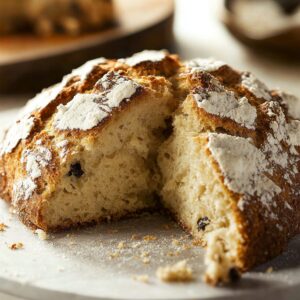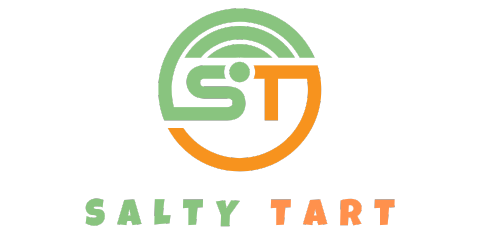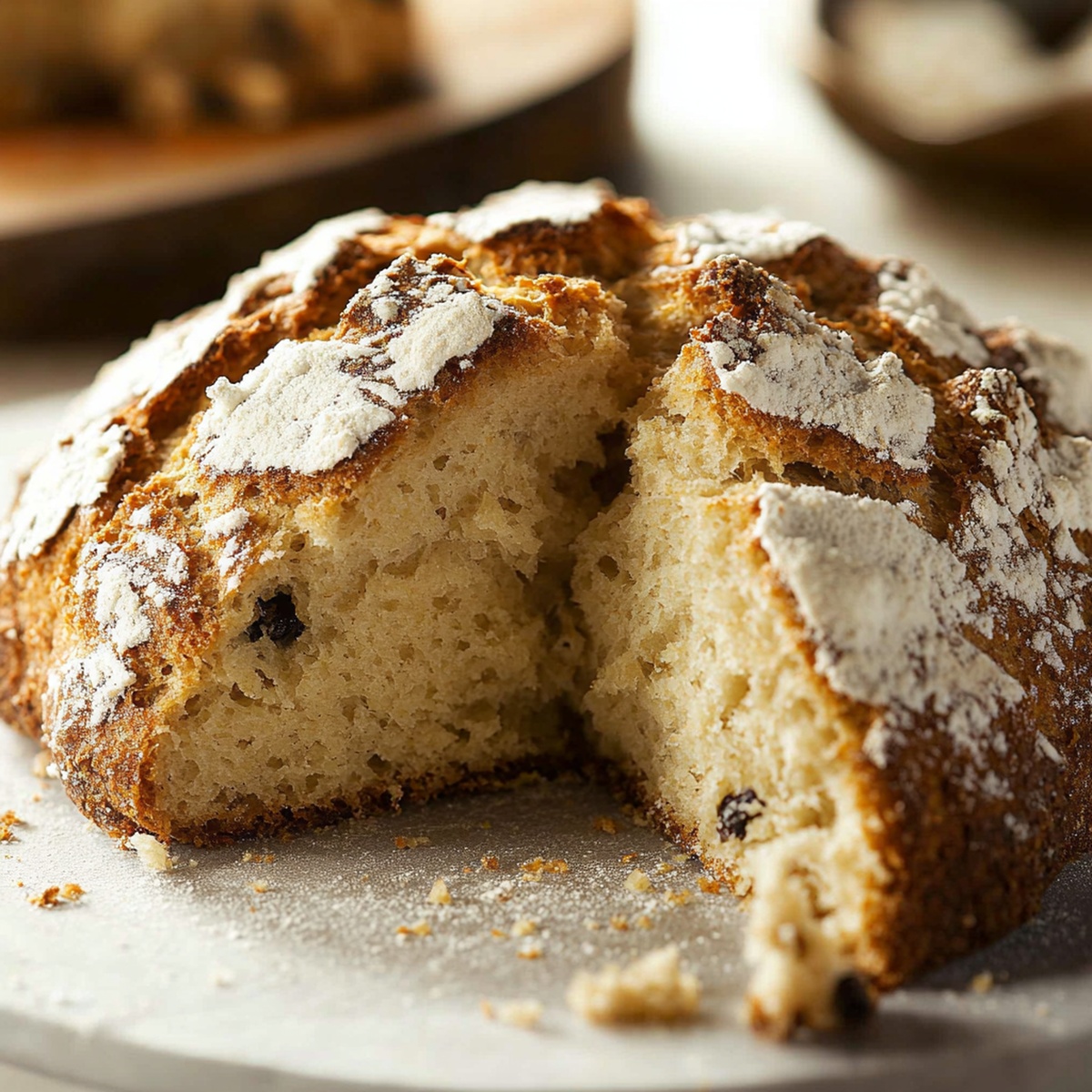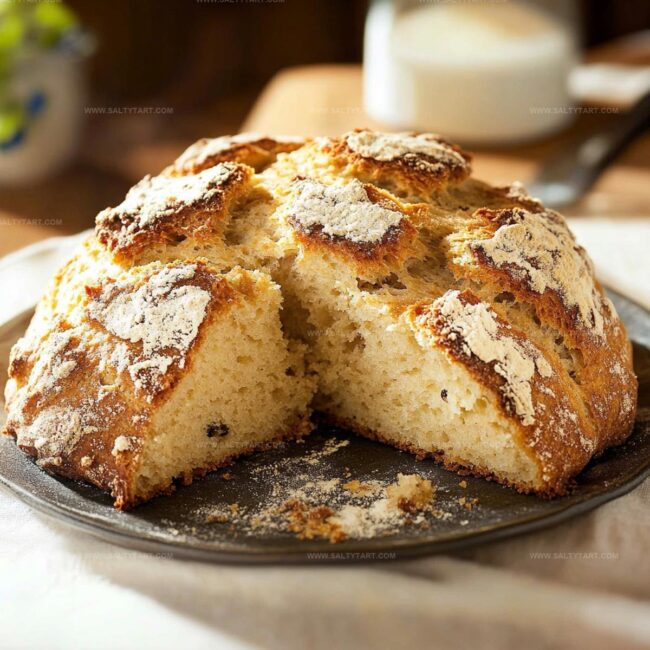Classic Irish Soda Bread Recipe: A St. Patrick’s Day Essential
Irish soda bread carries a rustic charm that whispers stories of emerald landscapes and cozy kitchens.
Hearty loaves emerged from humble beginnings during challenging times when ingredients were scarce.
Families across ireland perfected this simple yet satisfying recipe using basic pantry staples.
Traditional baking methods require minimal skill, making it accessible for novice cooks seeking authentic flavors.
Rough-textured and slightly dense, this bread pairs wonderfully with creamy butter or hearty soups.
Generations have passed down techniques that create a golden-brown exterior with a soft, tender crumb.
Fresh from the oven, you’ll savor every warm, comforting slice that connects you to ireland’s rich culinary heritage.
Why Irish Soda Bread Is a Classic Favorite
Ingredients for St. Patrick’s Soda Bread
Dry Ingredients:Wet Ingredients:Optional Additions:How to Bake Irish Soda Bread Easily
Step 1: Warm Up the Oven
Get your oven toasty hot at 425°F (220°C). Grab a baking sheet and cover it with parchment paper for a smooth bread-baking experience.
Step 2: Blend Dry Ingredients
In a spacious mixing bowl, whisk together:Make sure everything is nicely combined with no lumps.
Step 3: Introduce Wet Ingredients
Pour in buttermilk and melted butter.
Stir gently with a wooden spoon until the dough starts to come together. Don’t overmix – you want a shaggy, rustic texture.
Step 4: Shape the Loaf
Dust your work surface with a sprinkle of flour. Transfer the dough and give it a few gentle kneads.
Form the dough into a round, plump loaf. Using a sharp knife, carve a deep X across the top – this helps the bread bake evenly and looks super traditional.
Step 5: Bake to Golden Perfection
Slide your loaf onto the prepared baking sheet. Pop it into the preheated oven and bake for about 30 minutes.
You’ll know it’s done when the crust turns a beautiful golden brown and tapping the bottom produces a hollow sound.
Step 6: Rest and Enjoy
Let the bread cool for a few minutes.
Slice, serve, and savor the classic Irish goodness!
Tips for Baking Irish Soda Bread
Variations for Irish Soda Bread
Best Pairings with Irish Soda Bread
Smooth Jameson or Bushmills whiskey complements the bread’s hearty texture, enhancing its rustic flavors with a warming Irish spirit.
Spread rich, cultured Kerrygold butter on warm slices, creating a luxurious and traditional taste experience that celebrates Irish culinary heritage.
A creamy, traditional Irish potato and leek soup perfectly balances the dense soda bread, offering a comforting and classic meal combination.
Aged Irish cheddar like Dubliner provides a tangy contrast to the bread’s mild flavor, creating a delightful savory pairing.
Storage Tips for Irish Soda Bread
FAQs
Irish soda bread uses baking soda instead of yeast as a leavening agent, which means it doesn’t require rising time and can be made quickly without kneading extensively.
The X helps the bread cook evenly and allows steam to escape during baking, which creates a traditional look and helps the bread rise properly.
Yes, you can create a buttermilk substitute by mixing regular milk with a tablespoon of white vinegar or lemon juice and letting it sit for 5 minutes before using.
Print
St. Patricks Classic Irish Soda Bread Recipe
- Total Time: 45 minutes
- Yield: 12 1x
Description
Hearty st. patrick’s classic irish soda bread brings rustic charm straight from Ireland’s rolling countryside. Crusty exterior and tender crumb promise a delightful slice of traditional comfort you’ll savor with each memorable bite.
Ingredients
Main Ingredients:
- 12 cups (2880 milliliters) all-purpose flour
- 1 12 cups (360 milliliters) buttermilk
- 4 tablespoons (60 milliliters) unsalted butter, melted
Leavening and Seasoning:
- 1 teaspoon baking soda
- 1 teaspoon salt
Optional Ingredients:
- 1 cup (240 milliliters) dried fruit
Instructions
- Preheat the oven to 425°F (220°C) and prepare a baking sheet with parchment paper for optimal bread baking conditions.
- Combine flour, baking soda, and salt in a spacious mixing bowl, ensuring even distribution of dry ingredients through thorough whisking.
- Create a soft dough by gently incorporating buttermilk and melted butter, mixing until ingredients barely coalesce without overmixing.
- Transfer the fragile dough onto a lightly dusted work surface, performing minimal kneading (5-6 gentle turns) to maintain the bread’s delicate texture.
- Form the dough into a rustic circular shape, using a sharp knife to carve a distinctive cross-shaped score on the top surface, allowing steam to escape during baking.
- Position the prepared loaf on the parchment-lined baking sheet, then bake for approximately 30 minutes until the exterior develops a rich golden-brown color.
- Verify doneness by tapping the bottom of the bread – a hollow sound indicates the soda bread is perfectly cooked and ready to be removed from the oven.
- Allow the bread to rest and slightly cool before slicing, ensuring clean cuts and preserving the bread’s delicate internal structure.
Notes
- Swap whole wheat flour for a portion of all-purpose flour to boost nutritional value and add a nutty flavor profile.
- Handle dough minimally to keep bread tender and prevent tough, dense texture from overworking gluten.
- Brush loaf with melted butter immediately after baking for extra golden, crispy crust that adds rich flavor.
- Store bread wrapped in clean kitchen towel at room temperature for maximum freshness, consuming within 2-3 days for best taste and texture.
- Prep Time: 15 minutes
- Cook Time: 30 minutes
- Category: Breakfast, Snacks, Dinner, Lunch
- Method: Baking
- Cuisine: Irish
Nutrition
- Serving Size: 12
- Calories: 247
- Sugar: 5 g
- Sodium: 279 mg
- Fat: 3 g
- Saturated Fat: 2 g
- Unsaturated Fat: 1 g
- Trans Fat: 0 g
- Carbohydrates: 51 g
- Fiber: 2 g
- Protein: 6 g
- Cholesterol: 10 mg





Mike Reynolds
Founder & Recipe Developer
Expertise
Farm-to-table cuisine, Seasonal recipe development, Sustainable cooking techniques, Food photography
Education
Asheville-Buncombe Technical Community College (A-B Tech)
Associate Degree in Culinary Arts
Mike studied culinary arts with a strong focus on farm-to-table principles and sustainable cooking. His training emphasized the importance of fresh, local ingredients and environmentally responsible practices in the kitchen.
Mike’s food journey began deep in the Blue Ridge Mountains, where weekends at farmers’ markets and home-cooked meals sparked a lifelong obsession with simple, seasonal eating.
After earning his Associate Degree in Culinary Arts from Asheville-Buncombe Technical Community College, he set out to bring farm-to-table cooking into everyday kitchens, without the fuss.
Mike’s philosophy is all about keeping it fresh, unfussy, and full of heart. When he’s not crafting new single-serving recipes, he’s hiking mountain trails, chatting with local farmers, or experimenting with wild ingredients in his backyard kitchen.